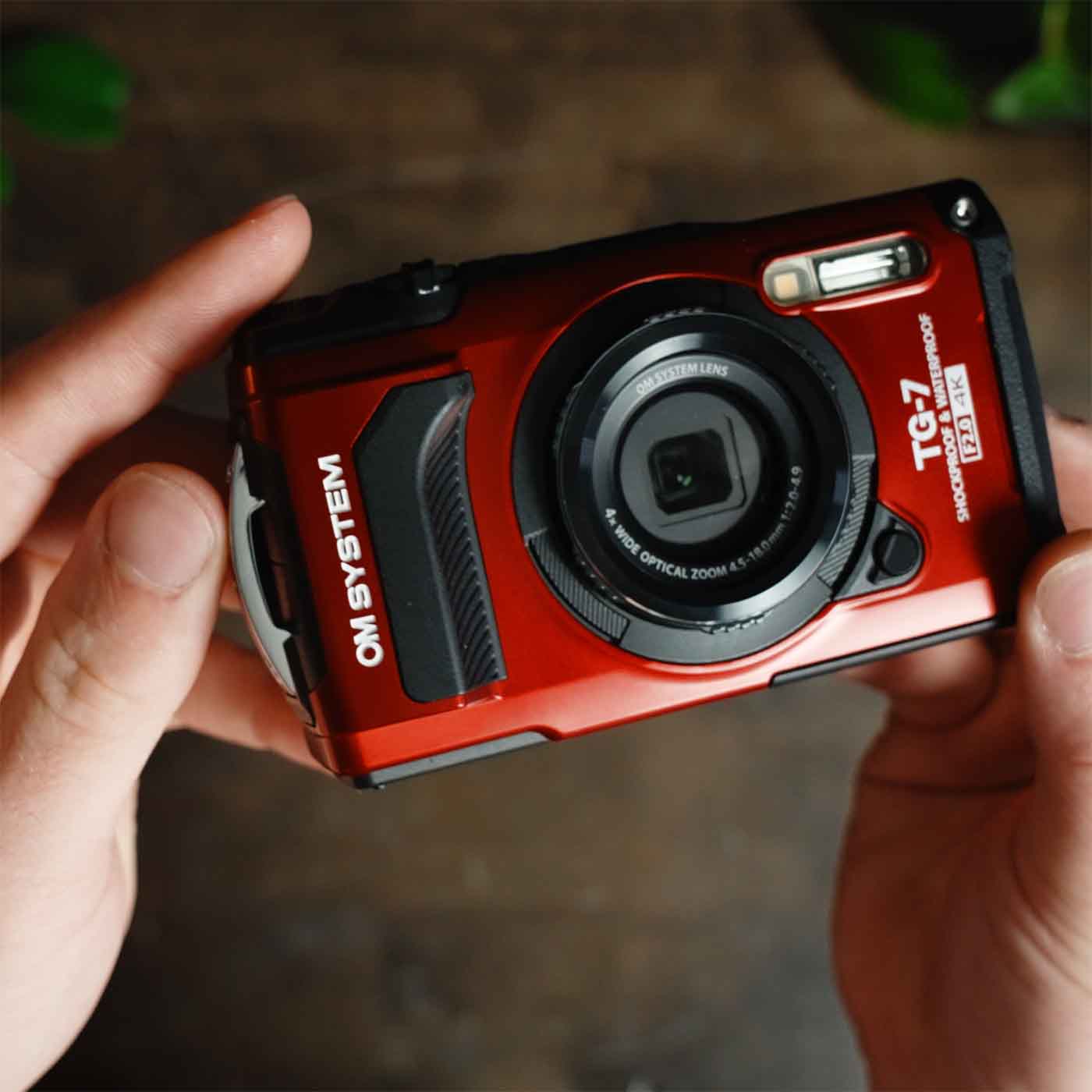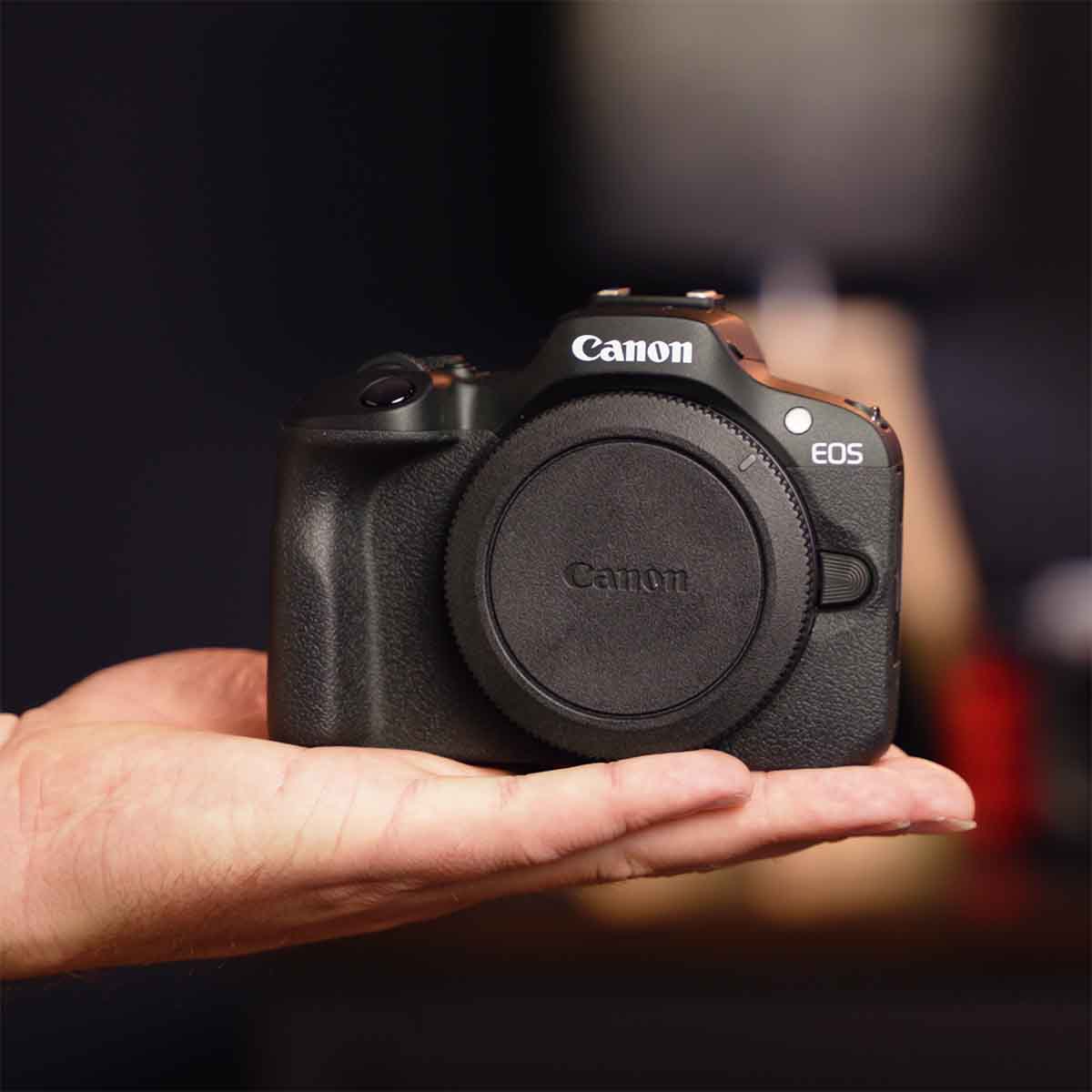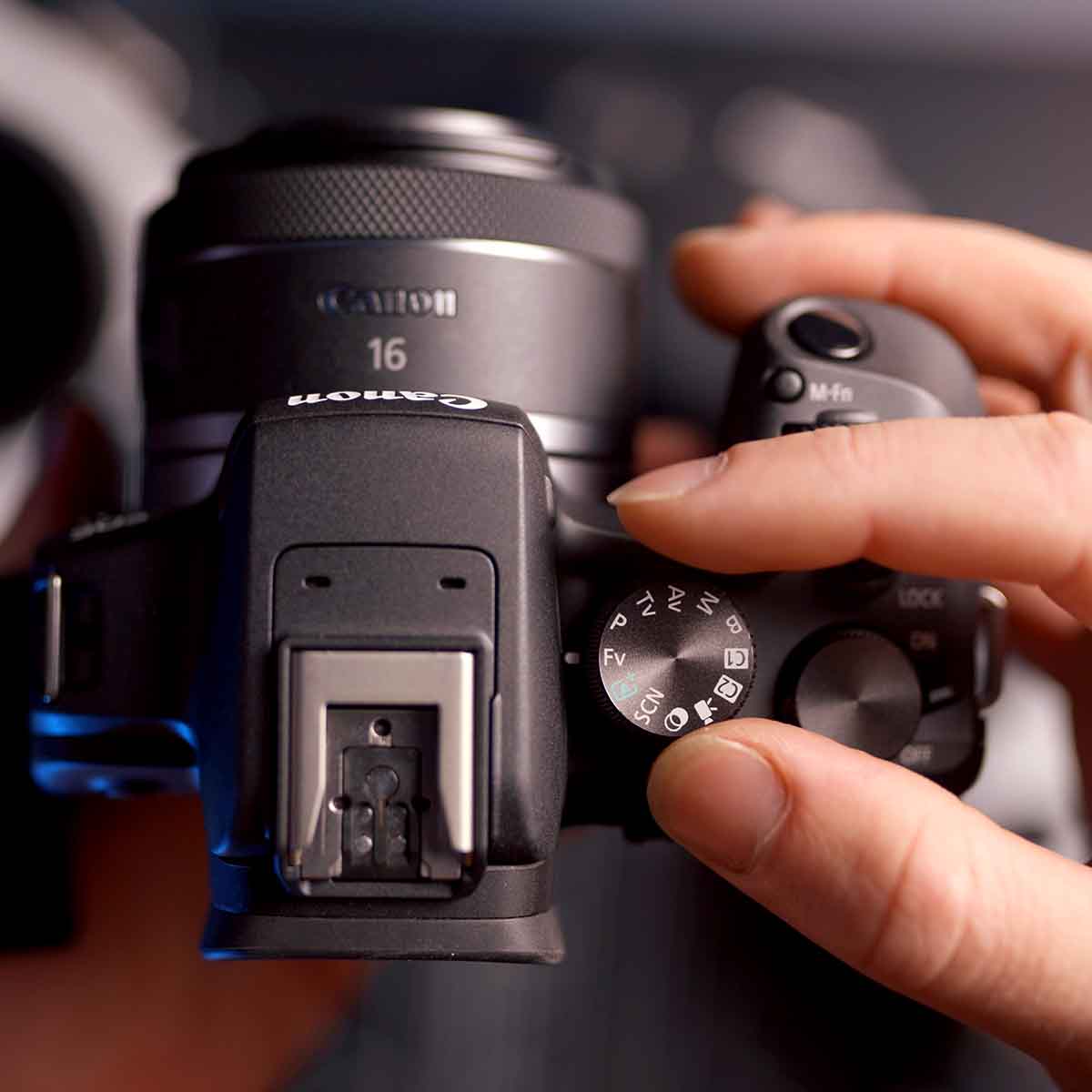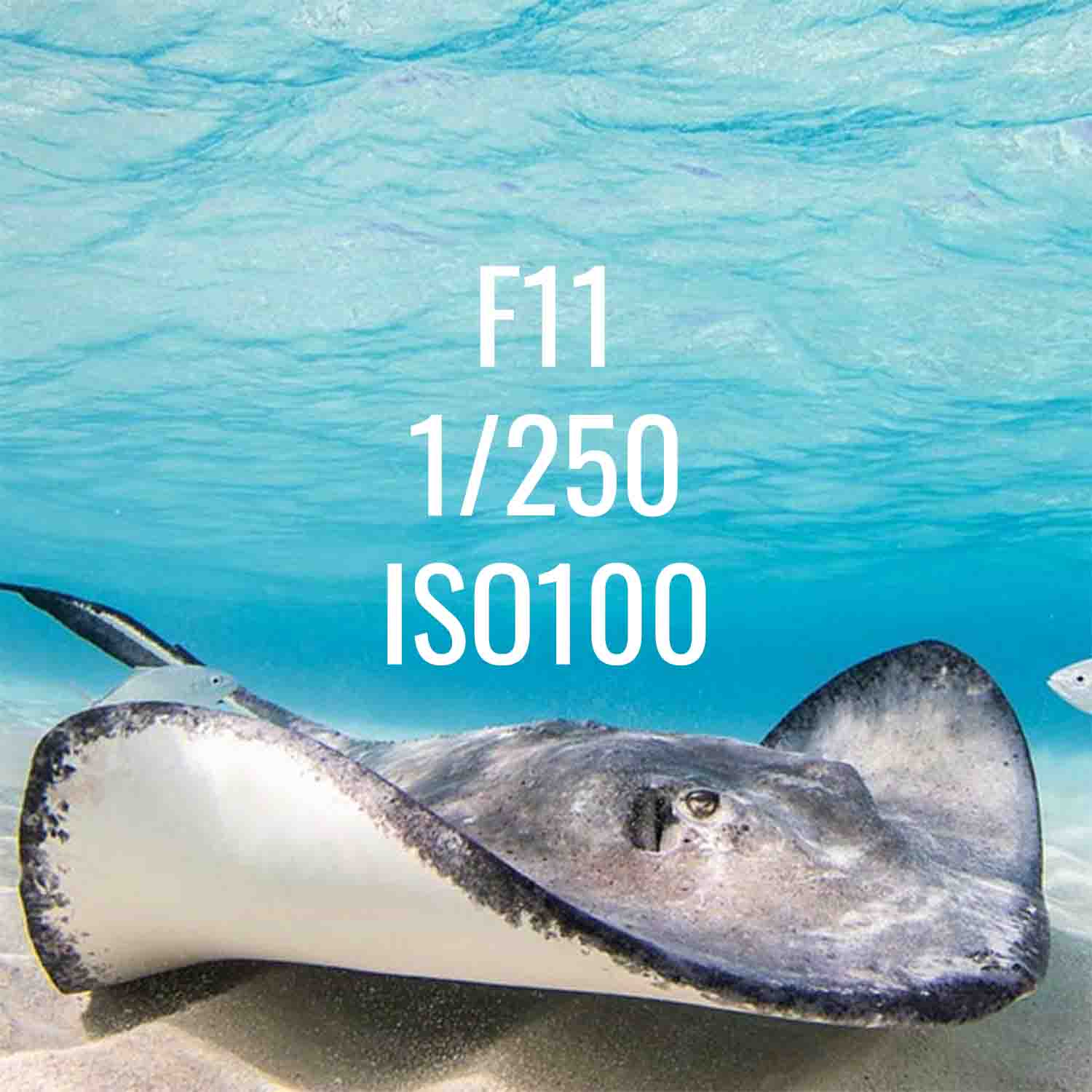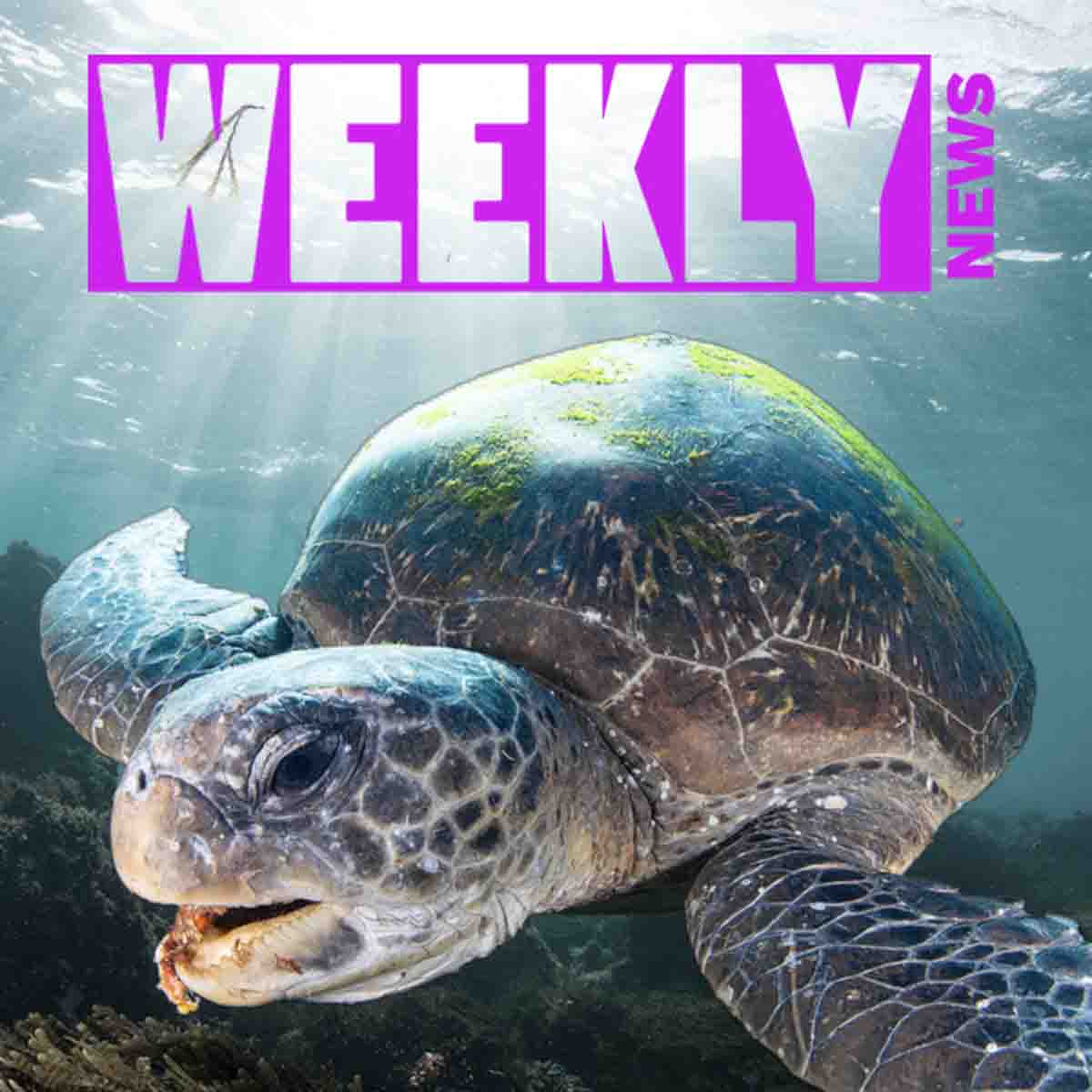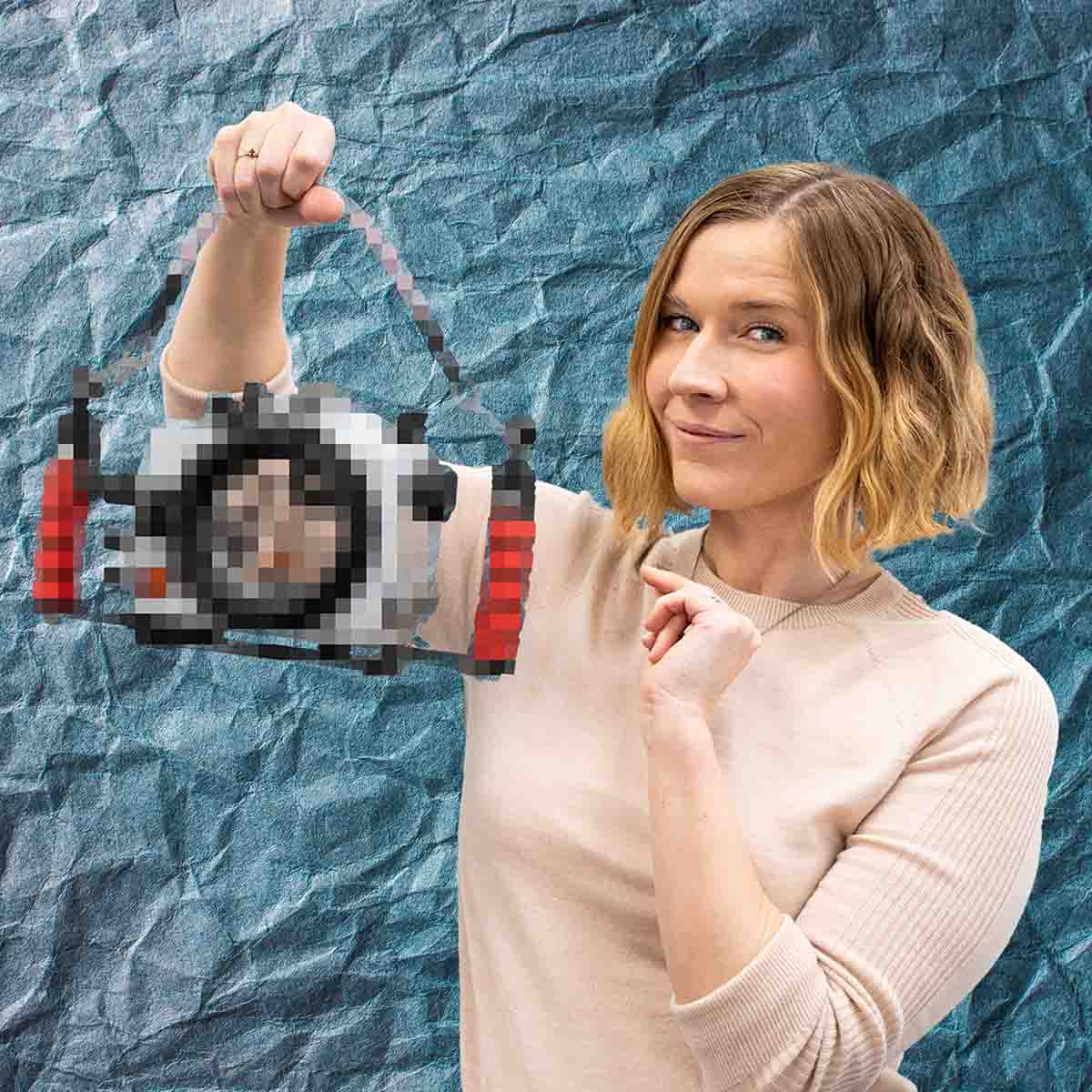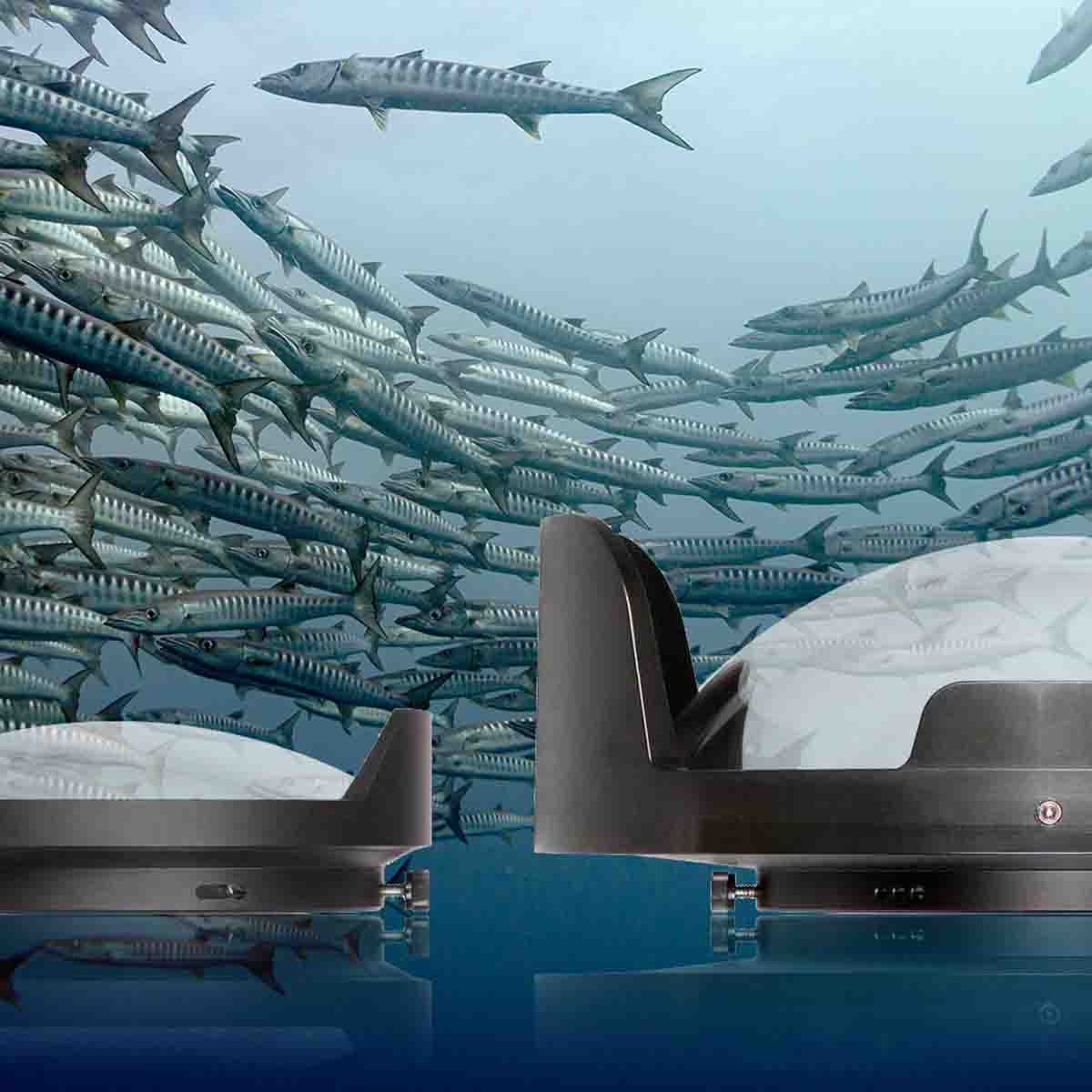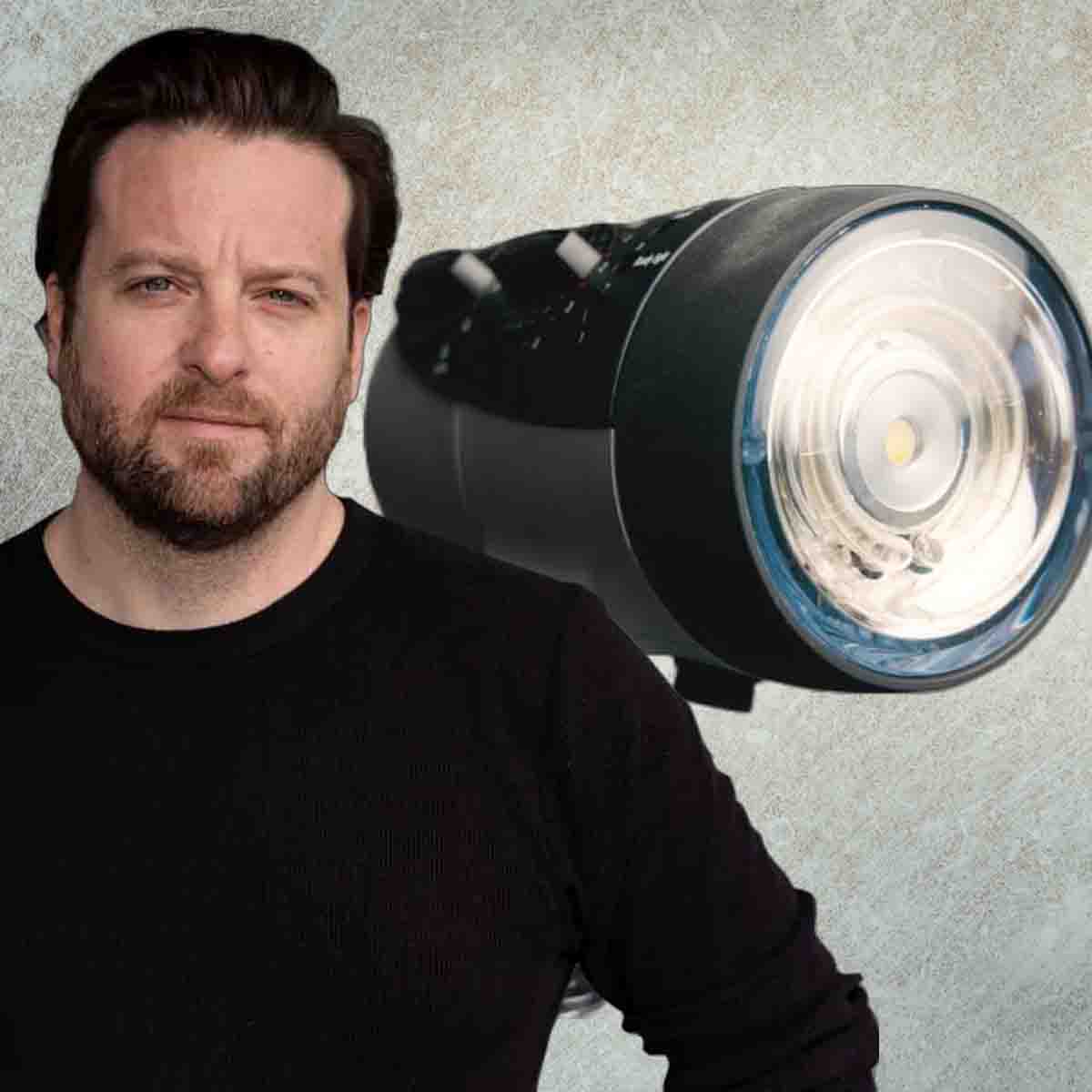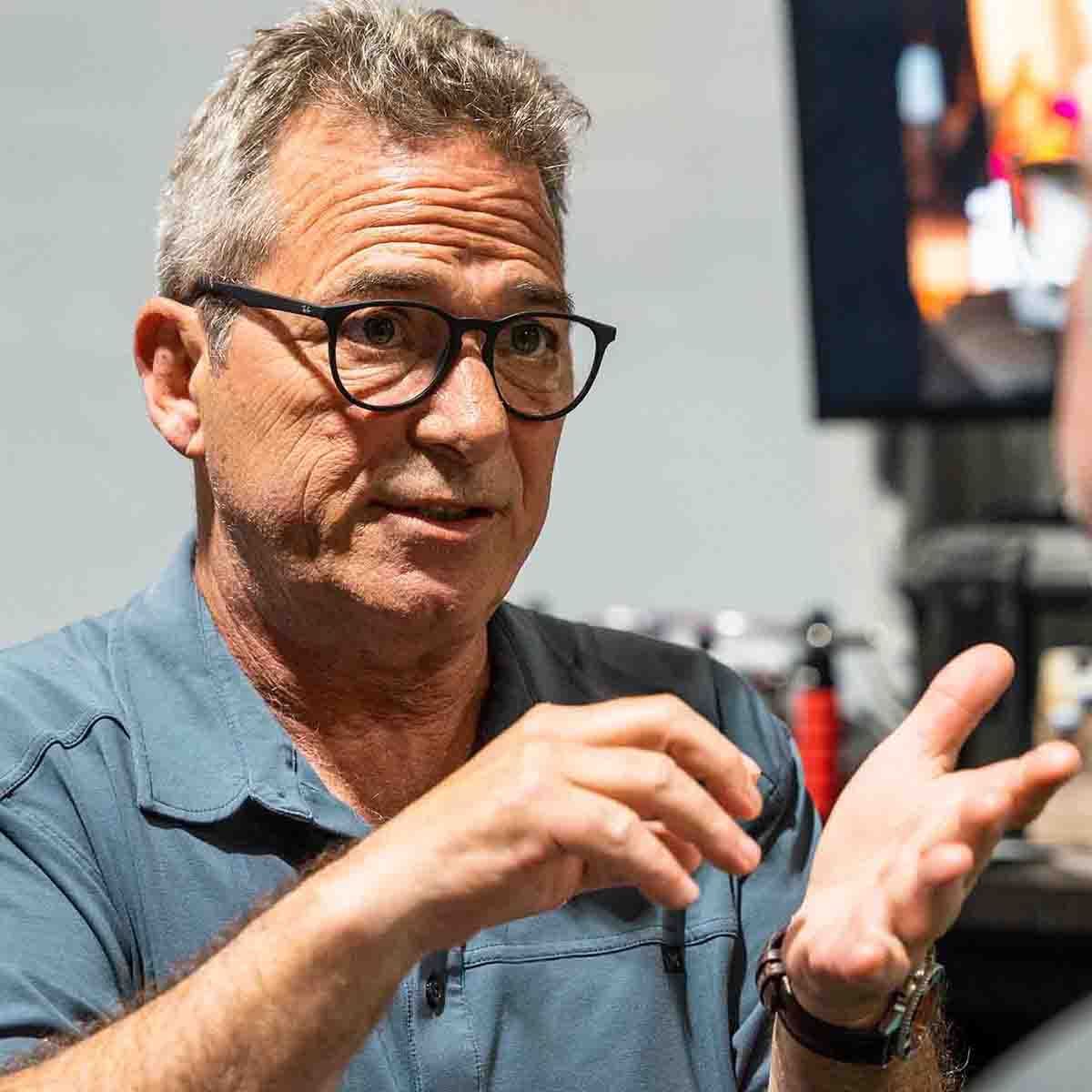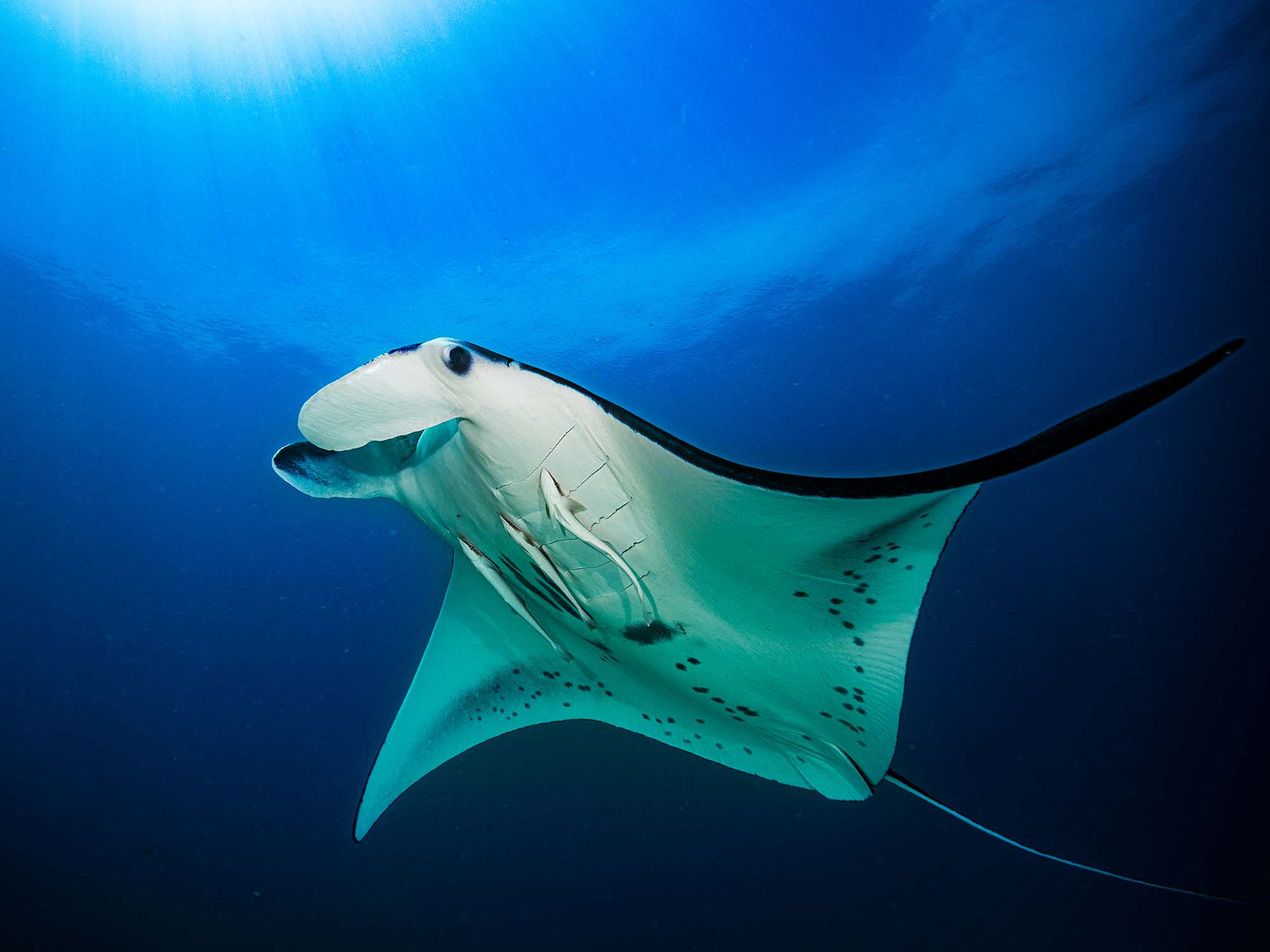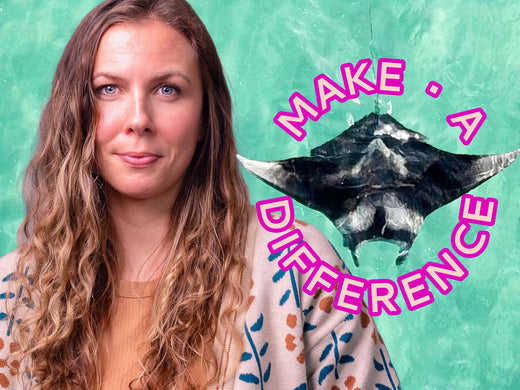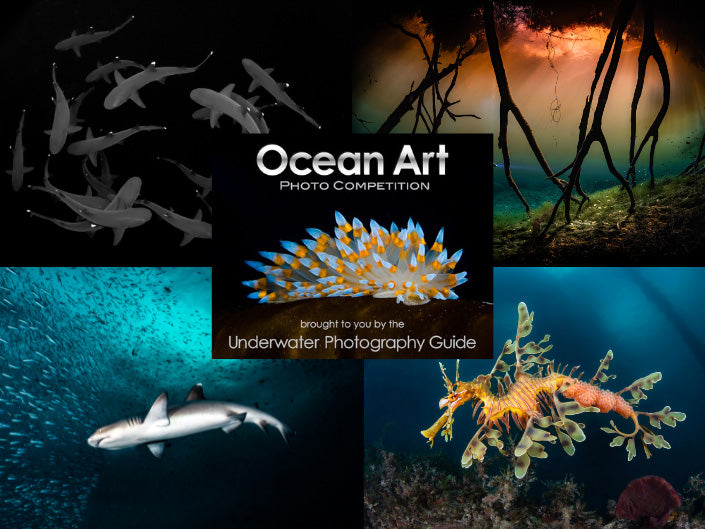By Fritz Liechti
Due to Covid, we had to postpone our trip to Indonesia for a few years. In 2024, we finally made it. We had planned a trip to two resorts in Raja Ampat and Triton Bay, as well as a trip with the liveaboard Amira. As an underwater photographer, such a trip to the end of the world is a logistical adventure. But with the help of my wife Magdalena, we managed to get all the equipment to Sorong after 16-hour of flight time (and many hours in airports).
Mantas – they really exist!
Well – many of my colleagues always made fun of me because in 40 years and thousands of dives I had never seen a manta ray. I always replied that this kind of fish had died out and that all the photos were just fake news anyway. On my 4th dive of of the resort “Papua Paradise," I saw manta rays with my own eyes and of course took pictures of them – now I’m sure – they exist.

Manta • Canon R5 with 10-20mm • 19mm • F7 • 1/160 • ISO 100 • Dual DS230 Strobes © Fritz Liechti
There were manta rays with different drawings on their bellies. Among them were also completely black ones. These were quite a challenge to take photos, my camera didn't like the large black surface.

A black manta ray, they were huge • Canon R5 with 10-20mm • 19 mm • F7 • 1/160 • ISO 100 © Fritz Liechti
The Right Lens
For years I took pictures with the Canon 8-15 mm / F4. A great lens, but I was annoyed that I could only take pictures with the 8mm setting (round fisheye photo) or with 15mm (rectangular photo, without cropped corners). Now I was also using the new Canon RF 10-20 mm / F4.

Striped sweetlips – The biggest problem to take photos were that there were other divers around • Canon R5 with 10-20mm • 10mm • F9 • 1/200 • ISO 200 © Fritz Liechti
I was excited when I found a large group of striped sweetlips for the first time. Taking a photo without any divers in it was a challenge. But I'm not happy – the fish swarm is blurred at the edges. When photographing corals, the lens blur becomes even more apparent.
In June, I went out diving with Alex Mustard. We tested the lens again together. The edge blur is not a joy. The lens should therefore be used primarily for subjects in open water (without any image detail in the corners). I am now back to using my 8-15 mm.

You don’t need to run early in the morning on a dive boat. Diving directly under the dive shop and jetty you can often find cool motifs. Canon R5 with 10-20mm • 17mm • F9 • 1/160 • ISO 400 © Fritz Liechti
On the road with the liveaboard Amira from Sorong – Misool – Triton Bay – Kaimana

The diving and the service on the Amira were superb. It was a very special experience to be underway on a three-master as a diving ship. On the last day, they hoisted the sails for us. Hard work – at home I will never change my motorboat for a three master. We experienced truly unforgettable dives.
Photographing through the day with the wide angle, at night with macro on the hunt for special motifs. In a few regions, it was a very special adventure, especially at night. As soon as the light was switched on, there seemed to be millions of little critters around you. The damn beasts even crawled into my ears. So I switched the pilot light to red and scanned the reef very slowly. But the critters had found a new best friend and taking pictures was like taking pictures in a dense snowstorm with the car headlights on.

With this small cuttlefish I was lucky. The first shot in the dark was to keep (even if I didn't quite hit it). A short moment later the cuttlefish was swarmed by thousands of these annoying, small beasts. Canon R5 with 100mm • F9 • 1/160 • ISO 320 © Fritz Liechti
Triton Bay in West Papua - The Beauty and the Beast
From the Amira we traveled to a really special place. Triton Bay - the small and remote resort of “Triton Bay Divers” in the middle of an area with incredible biodiversity and far away from civilization. You reach it from Kaimana. Soft corals etc. in all colors, a lot of different fish, walking shark, nudies, whale sharks etc. It's amazing what nature can offer. The staff on this resort was so friendly and helpful and Nurul, a great uw-photographer, organized as co-owner everything for me.

Colourful soft corals in Triton Bay. Canon R5 with 10-20mm • 17mm • F7.1/160 • ISO 250 © Fritz Liechti

My friend the Blenny, they are so cute – He was always amazed by the guy with the huge camera. Canon R5 with 100mm • F2.8 • 1/200 • ISO 100 © Fritz Liechti
But I finally wanted to photograph pygmy seahorses. My guide found them with an eagle eye (often when I had a wide-angle lens on the camera).

My beauty! In Triton Bay we had yellow pigmy seahorses on a yellow soft coral. The yellow ring is created with a magic tube (tube with mirrors inside, fixed in front of the macro dome). Canon R5 with 100mm macro • F14 • 1/160 • ISO250 © Fritz Liechti
Photographing with a large housing with dual flash is not easy. I only used a flash with a snoot. Without your guide's pointing stick, you'll never find the pigmy. However, the pigmy doesn't like photographers at all and quickly turns away because of the bright light. 4-5 photos, then I left the cute seahorse alone. This was truly my beauty on this trip.
Kaimana – fishing boats with whale sharks as visitors
Early in the morning we took the boat from Triton Bay towards Kaimana to the bagans. Local fishermen use floating platforms called ‘bagans’ to both live and work in. They fish at night with lights and nets, mostly for smaller fish. At 7 a.m., most of the fish have been sold to the local population. Whale sharks, dolphins and bigger fish are waiting for the left over. The rest then is bought by the dive boats

We had up to 5 whale sharks at our bagan. The water was not very clear from all the fish and fish waste. Canon R5 with 10-20mm • 10mm • F.7.1 • 1/160 • ISO 200 © Fritz Liechti
Whale sharks and dolphins circle around some of the bagans, all waiting for a tasty breakfast. A crew member then repeatedly throws a handful of small fish to the whale sharks.

Canon R5 with 10-20mm • 18mm • F.6.3 • 1/160 • ISO 200 © Fritz Liechti

Whale shark in black/white. With all the action, the surface was a bit wavy. the reflection was not top notch. I tried it anyway. Canon R5 with 10-20mm • 18mm • F.6.3 • 1/160 • ISO 200 © Fritz Liechti
Well – I was right in the middle of it. Fortunately, I was a bit bigger than all the bait fish. The guide warned us before not to bother the whale sharks and to keep our distance. But he didn't tell the whale sharks that they should leave me alone too. Most of the time we just avoided each other. But there was one that I only just managed to avoid when it opened its mouth in front of me. I turned away to avoid being hit by his head and got slapped in the face by the tail of another whale shark behind me that I hadn't noticed. After a brief shock, I turned back and got hit square in the face by the first whale shark's tail from the other side. The whale sharks had a nasty laugh in their eyes and were ready for the next portion of fish. Result: the flashes in all directions, the housing still sealed, the mask somehow still on my head, my buddy almost drowning with laughter. These whale sharks are real beasts and their bodies feel like rock-hard leather. Well - no touching the beasts.

After the whale sharks I needed some dives with less stress. Chasing nudies was the target. They don’t slap you and you are on the save side. Canon R5 with 100mm macro • F14 • 1/160 • ISO 125 © Fritz Liechti
My wife Magdalena and I feel comfortable far from civilization. We seek nature and not mass tourism. Sure, we have to fly far to get there, but since we usually spend a month exploring the area, we don't have a such bad conscience about it.
Tips for Traveling to Remote Areas
Always take two of the important parts of your photo equipment with you. You won't find a replacement if something breaks or is missing. For me, this means: 2 camera bodies, several wide-angle lenses, 2-3 sets of converters, dual cables, hotshoes, 3 DS230 Strobes, 2 wide-angle domes, repair material. In short – a housing could be flooded (if you are hit by the whale shark), the housing can be dried and re-equipped and you can take pictures again.
With small items and some repair stuff, a Swiss army knife and a pair of pliers, you can improvise and fix a lot yourself.
We usually fly business; with good planning this is not that much more expensive. The most important photo equipment is in the hand luggage (backpack and bag). I usually have about 15 kg (33 lb). Magdalena has the computer, batteries and more lenses. Just always go through boarding relaxed, casual, smiling and don't look like an overloaded donkey that would drop dead in the next few minutes.
Nature offers so many unique adventures. As underwater photographers, we can experience and photograph them up close and in all their beauty.
Our dive spots:
• Raja Ampat
• Liveaboard Amira
• West Papua / Triton Bay
Additional Viewing
An Insider's Guide to Liveaboard Diving
River Junkie: Underwater Photography in the Freshwaters of Switzerland
Fighting for the Best Picture: Live Underwater Photography Competitions
DON'T MISS the World Record Shot // Photographing a Freediver Under the Ice
Photographing the Salmon Run Underwater in Canada
Whale Shark Photography Underwater Camera Settings
Nudibranch Underwater Camera Settings and Technique
Fritz Liechti of Switzerland started diving in 1986 and rarely goes into the water without a camera. He particularly enjoys diving in Switzerland's rivers, especially at night. He travels the world and teaches underwater photography as a CMAS (World Confederation of Underwater Activities) Diving and Underwater Photo Instructor. He has had his work published in several magazines and represented Switzerland in the 2019 CMAS Underwater Photo World Championships. See more of his work at fritzliechti.ch

